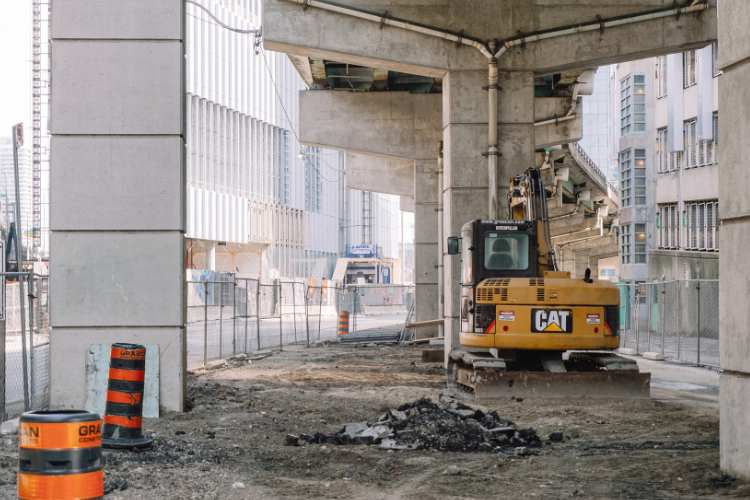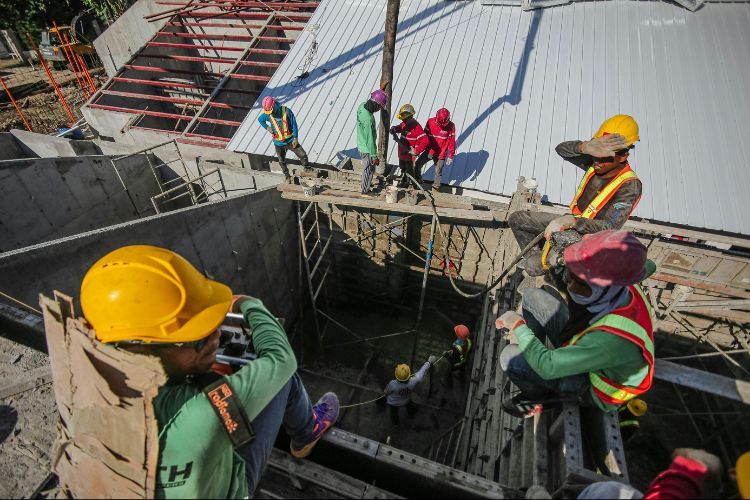However, general contractors and project owners will often contractually require this for subcontractors—so if you can’t get bonded, you can’t take on the projects you need to grow your business.
Here’s what you need to know to become eligible for a P&P bond as a subcontractor so you can land larger (and more) projects to keep growing your business.
Table of Contents
What is a P&P bond, and how does it work?
Issued by a surety bonding company, a P&P bond is actually two separate contractor bonds grouped together.
A payment bond is what guarantees you will pay any suppliers, subcontractors, and laborers based on contractual obligations. A performance bond ensures the satisfactory completion of a project within the stipulations of the contract.
If you fail to perform all aspects of the contract or cause damage to the property while performing your work, the GC or project owner could file a claim against the performance bond to recoup the cost. The bonding company would pay the claim and seek full reimbursement from you, the subcontractor. Likewise, if you fail to pay material suppliers or laborers, they can file a bond claim to recoup what they’re owed. (The more claims filed against you, the less bonding companies are likely to work with you—something to keep in mind!)
These are granted on a per-project basis, so you’ll potentially need to obtain additional bonds for multiple projects. Rates for P&P bonds can range anywhere from 1-3% of the total scope of your work on a project, with 2.5-3% being the average rate. This means, if you land a $100k job on a commercial construction project that requires P&P bonding, you’ll need to factor $2500-$3000 into your cost of doing business. However, if you’re in a higher credit risk category, you can expect to pay upwards of 5% of your project revenue.
How do I get a P&P bond?
Due to the requirements for eligibility, securing a P&P bond can be a struggle for many subcontractors who are still building their financial strength. In order to get bonded by a surety company, you’ll need one of two essential items:
- Collateral in the form of cash
- A letter of credit from your financial institution
In addition, surety companies may also require CPA-reviewed financials, or even a step above that, CPA-audited financials.
Without the ability to put up the cash or obtain a letter of credit from your bank for the full amount of that $100k job, and then to potentially have those financials reviewed or audited by a CPA, getting bonded can be difficult.
Those who simply don’t have the business finances that would support a P&P bond might opt for personal indemnity instead, which means putting your personal finances on the line to secure the bond. If you’re a small business owner either working alone or with only a few employees, this might make sense because your personal and business finances are so intertwined. However, your ultimate goal should be to have this eventually removed by the surety bonding company so that your business can stand on its own.
Three ways to become eligible for a P&P bond
So, how do you overcome these hurdles to entry if you just don’t have the financials yet? Here are three steps you can take now to become eligible for a P&P bond and position your business for success in the long run.
1. Develop a future-facing financial mindset
It’s important to approach your business with a financial mindset early on, with the future in mind. What will it take for your business to get bonded so you can avoid personal indemnity and accept the larger, more complex projects that will support growth? Keeping your financial records organized and up to date, adopting new accounting software and improving your cash flow will go a long way toward strengthening your financial position so you can gain the confidence of a surety company.
2. Partner with a CPA
Many general contractors and project owners use bonding as a tool to screen for credible, trustworthy subcontractors they’re willing to work with—so as your business grows, it will become a nonnegotiable fact that you either have to put up collateral or provide secure financials to get a P&P bond. Even if you currently have a small amount of work and don’t yet have the necessary financial clout, getting a CPA involved as early as possible is important so that they can start to prepare your financials.
In the meantime…
3. Stair-step your way to a P&P bond
Start small and put up personal indemnity if necessary. Over time, as you accept more and larger projects, work with your CPA, and maintain your financial records, it’s possible to build the kind of financial strength that will gain the confidence of a surety company.
Need better cash flow? Billd can help.
At Billd, we’re not in the business of insuring or bonding construction entrepreneurs—we’re construction industry experts who ease contractor cash-flow problems with an innovative, flexible payment solution for construction materials. When you work with us, we’ll help you pay for materials up front so you can have the confidence to accept more projects, take on bigger projects, and grow your business.








